
हिमालयातील मानसरोवर जलाशयातून निघालेला सिंधूचा तो स्रोत तेथून सरळ वायव्येकडे धावत जातो. काश्मीरच्या लद्दाख भागातून हिमालयाला वळसा घालून काराकोरम पर्वताच्या पायथ्याशी जातो. गिलगिटजवळून ही नदी दक्षिणेकडे वळते. तेथे सिंधूला स्वाती नदी येऊन मिळते. काबूल नदीचे पाणीही ह्या नदीत येऊन मिसळते.
अटकजवळ आल्यावर तिला थोडी स्थिरता लाभते. तोपर्यंत पहाडी प्रदेशातील तिचा प्रवास अत्यंत वेगाचा आणि अवखळ पण अति रम्य असतो. अटक आणि कूर्म नद्या ह्या सिंधूला मिळाल्यावर तिचा प्रवाह अमर्याद पात्राचा बनतो.
सपाट प्रदेशात आल्यावर सिंधूच्या पात्रात अनेक बेटे निर्माण होतात. वारंवार प्रवाहाची जागा बदलते. डेरा इस्माईलपासून डेरा गाझीपर्यंत तिचे हे असेच चालते. नंतर मिट्टनकोटजवळ तिला जम्मू-काश्मीर व पंजाब प्रदेशातील पंचनद्या येऊन मिळतात आणि तिला विपुल जलसमृद्धी प्राप्त होते. तेथूनच ही सिंधू नदी म्हणजे एक मोठा नद बनतो.
सात खोऱ्यांतील पाणी पोटात सामावलेला हा प्रचंड सप्तसिंधू म्हणजे जगातील अनेक आश्वर्यापैकी एक विलक्षण विराट आश्चर्य बनलेला आहे.
सिंधूच्या तीरावरील भौगोलिक परिस्थितीही अशीच बहुविध आहे. हिमाल्याच्या उत्तर बाजूच्या पाणलोटाचे पाणी घेऊन ती निघते. उत्तर काश्मीरच्या निबिड डोंगरदऱ्यांतून ती धावत येते. केशराच्या मळ्यां-तील सुगंध वाहून आणते. वायव्य सरहद्दीच्या प्रांतातून अक्रोड, बदाम, पिस्ते वाहून आणते. आपल्या पात्रातील बेटांचे सृष्टिसादर्य खुलविते. वाळवंटात नंदनवन फुलविते, आपल्या दोन्ही तीरांवर गव्हाचे पीक अमाप पिपिकते आणि शेवटी जलमार्गालाही उपयुक्त बनून व्यापार, उद्योगधंदे वाढविते.
-शं .रा.देवळे
-संदर्भ -भारताच्या ललाटरेषा (१९६८)
सतलज
सिंधू नदीची ही मोठी सहाय्यक नदी आहे.सध्या वाचत असलेल्या भारताच्या ललाटरेषा या शं.रा देवळे यांच्या नदीवरील माहितीच्या पुस्तकातील काही वेचे देत आहे.हे पुस्तक १९६८ सालचे आहे.तेव्हा ब्रिटिशांपासून मिळालेले अगदी स्वातंत्र्य अगदी नवे होते, तेव्हा उज्वल भविष्याची आशा या पुस्तकात दिसतेच.पण नदीच्या आदराच्या जुन्या गोष्टीही समजल्या.
**
शंभर धारांनी वाहणाऱ्या या नदीला पूर्वा शतद्रु ,शुतुद्रि असे म्हणत असत. आज तिला आपण सतलज' असे म्हणतो. सतलज नदी समुद्रसपाटीपासून १५,२०० फूट उंचीवर असलेल्या मानस सरोवरातून -राक्षस सरोवरातून उगम पावते. गगनभेदी पर्वतराजीच्या खोल दऱ्याखोऱ्यांतून जणू आकाशालय भेदून हा प्रवाह भूल्येकाकडे निघाला आहे.
वायव्येकडे वाहात जाऊन कैलासास वळसा घालून ही नदी भारत-तिबेटच्या सरहद्दीवरून शिपकी ह्या ठिकाणी येते. सरहद्दीचा हा प्रदेश सतलजमुळे अत्यंत अवघड बनलेला आहे.
मोठमोठ्या कडयांवरून उड्या घेत सतलजचा प्रवाह हिमाचल प्रदेशातून अत्यंत वेगाने वाहात जातो. बुशहर भागातील विलासपूर आणि रामपूर येथे आल्यावर तिला शहरवस्तीचे प्रथमदर्शन होते.
अफाट लोकवस्ती, गदीं, दिव्यांचा झगझगाट वगैरे शोभा पाहून जणू लिचा भागील सर्व प्रवासाचा शीण जातो. नंतर तेथून पुढे मात्र कनवटच्या कठीण धाऱ्यातून जाताना तिची अगदी दमछाट होते. असा गुंतागुंतीचा चक्रव्यूह पार केल्यावर कुलू आणि मंडीच्या सरहद्दीवरून बाहात बाहात सतलजचा प्रवाह शिवालिकच्या पहाडी प्रदेशात शिरतो. ह्याच्च शिवालिक पहाडात सतलज नदीत्य अडवून जगप्रसिद्ध भाक्रानानगल धरण बांधलेले आहे.ह्याच ठिकाणी सतलजने भारतभूचे भाग्य उजळाले आहे.
शकांना भारतपार पिटाळून लावल्यावर विक्रमादित्याने सतलजच्या काठावरच आपला पहिला विजयोत्सव साजरा केला.
दिल्लीच्या सुलतानांनी सतलजच्या तीरावरच आक्रमक मोगलांना पाणी पाजले होते. औरंगजेबाने सतलज नदीवर पूल बांधून आपल्या दाराशुको या भावाचा बंदोबस्त केला होता.
शीख आणि अफगाण, शीख आणि मराठे, शीख आणि इंग्रज यांची युद्धे तर या सतलजने खूप वेळा पाहिली. गुरू गोविंदसिंह, गुरू बंदा आणि रणजितसिंह या शीख वीरांचे पराक्रम पाहून सतलजला धन्यता वाटली.
भगतसिंह, राजगुरू आणि सुखदेव ह्या क्रांतिवीरांना इंग्रजांनी लाहोर येथे फाशी देऊन त्यांचे मृतदेह सतलजकाठी फिरोजपूरपासून सहा मैलांवर अंधारात आणून ता. १३ मार्च १९३१ रोजी अग्निसात केले. तेव्हा सतलजला अत्यंत दुःख झाले. तिने त्या वेळी जणू इंग्रजांना नाशाचा शाप दिला.
सतलजने आपल्या तीरावरील युद्धांत झालेला संहार पाहिला, तसाच दुष्काळांनी उडविलेला कहरही पाहिला. आपल्या खोऱ्यातील जमीन सुजला सुफला व्हावी, आपले पुत्र सुखी व्हावेत, यासाठी ती तळमळत होती. सतलजची ती मनीषा फिरोजने जाणली आणि तिला बंधारा घालून एक कालवा प्रथम काढला. त्या कालव्याने शेती सुधारलेली पाहून सतलजला खूपच आनंद झाला.
-शं.रा.देवळे
ब्रम्हपुत्रा
#शंरादेवळे
आपल्या भारतात शोण, सिंधू, हिरण्या, कोका, लौहित्या, घर्घरा आणि शतद् (सतलज) असे सात नद प्रसिद्ध आहेत. या नदांपैकी लौहित्या हा नद आसाम प्रांतातून वाहतो. आसामी भाषेत लौहित्या हे नाव असलेला हा नद आपण ब्रह्मपुत्रा या नावाने ओळखतो.
ब्रह्मपुत्रा नदी तिबेटच्या पश्चिम भागात असलेल्या मानस सरोवराजवळ उगम पावते. ती तिबेटमधून पूर्वेकडे सुमारे आठशे मैल बाइत जाते. तिबेटमध्ये ही नदी सांगपू या नावाने प्रसिद्ध आहे. नंतर भारतात प्रवेश करताना ब्रह्मपुत्रा दक्षिणेकडे वळते. आसामच्या ईशान्येकडील मिश्मी टेकड्यांमधून ती आसाममध्ये प्रवेश करते. या नदीची लांबी सुमारे अठराशे मैल आहे.
) ही नदी आसामच्या सुमारे ५०० मैल लांब आणि ५० मैल रुंदीच्या खोऱ्यातून वाहते.
गोलंदोजवळ ब्रह्मपुत्रा नदी दक्षिणेकडे वळण घेऊन पूर्वेकडे वाहणाऱ्या पद्मा नदीस मिळते. पद्मा आणि ब्रह्मपुत्रा यांचा संयुक्त प्रवाह पुढे मेघना या नदीस मिळतो. वास्तविक पद्मा आणि मेघना हे गंगेचेच वेगवेगळे फाटे आहेत.या नदीला ब्रम्ह देवाचा पुत्रच मानलं गेले म्हणून ब्रम्हपुत्रा' नाव पडले..
ब्रह्मपुत्रा आणि गंगा म्हणजे आसाम, बंगाल, बिहार आणि ओरिसा यांना जोडणारे प्रमुख मार्ग होते. ह्यएनत्संग हा चिनी प्रवासी मगधातून निघून चंपा, कजंगल, पुंडूवर्धन आणि तेथून पुढे कामरूपला पोहोचला. गंगा, यमुना, सरस्वती यांचा त्रिवेणी संगम प्रयागला (अलाहाबाद) होतो. तेथून पुढे वाहात जाणाऱ्या या संयुक्त प्रवाहाला ब्रह्मपुत्रा येऊन मिळते. जेथे हा संगम होतो, ते ठिकाण एक मोठे तीर्थस्थान बनले आहे. कालिकापुराण आणि योगिनीतंत्रात उल्लेखिलेली आसामातील बहुतेक सुप्रसिद्ध तीर्थे ब्रह्मपुत्रेच्याच काठी आहेत. कामाख्या देवीचे प्रसिद्ध मंदिर ब्रह्मपुत्रेच्या काठी असलेल्या नीलाचल टेकडीवर आहे.
दरवर्षी ब्रह्मपुत्रेला मोठमोठे पूर येत असल्यामुळे आणि तिचे पात्र वारंवार बदलत असल्यामुळे तिच्या काठच्या प्रदेशातील लोकांच्या जीवित-वित्ताची प्रचंड प्रमाणात हानी होत असते; म्हणूनच ब्रह्मपुत्रेला 'आसामचे अश्रू ' 'दुःखाश्रूची नदी' म्हटले जाते. या नदीच्या पात्रात मोठमोठाली वाळूची बेटे निर्माण होतात आणि त्यावरील वाळू नदीच्या वेगवान प्रवाहाळे पुनःपुनः धुऊन निघत असते. कालवे काढून पिकांना पाणीपुरवठा करण्यासाठी या नदीचा उपयोग मोठ्या प्रमाणावर होत नाही. अतिशय पडणाऱ्या पावसामुळे आणि वाहून आलेला गाळ साचल्यामुळे ब्रह्मपुत्रेच्या खोऱ्यातील जमीन अत्यंत सुपीक बनली आहे.आसामची भाग्यविधाता ही ब्रम्हपुत्रा आहे.
महानदी
महानदी ही सिहावाजवळील एका लहानशा कुंडातून निघून उत्तरेकडे वळते. नंतर ती रायपूर जिल्ह्यातून पुढे जाते. सौरी नारायण येथे तिला शिवनाथ या नावाची नदी येऊन मिळते. नंतर महानदी पूर्वेकडे वाहात जाऊन बिलासपूर जिल्ह्यात प्रवेश करते. येथे तिला जोंक आणि हसदो या नावाच्या नद्या येऊन मिळतात. नंतर संबळपूर जिल्ह्यातून ती पुढे बाहात जाते. येथे तिला एब, ओंग आणि टेल या नद्या येऊन मिळतात. या ठिकाणी तिचे पात्र रुंदावते. पुराच्या वेळी तर तिच्या पात्राची रुंदी एक मैलापेक्षाही अधिक असते. महानदी घोलपूरहून निघाल्यावर पूर्वघाटातील ४० मैल लांबीच्या खिंडीतून पुढे झेप घेते आणि कटकापासून पश्चिमेस सात मैलांवर असलेल्या ओरिसाच्या त्रिभुज प्रदेशात येऊन ती स्थिरावते. येथे तिला अनेक फाटे फुटतात आणि अनेक मुखांनी ती शेवटी बंगालच्या उपसागराला जाऊन मिळते.
बंगालच्या उपसागराच्या जवळ यांच्या पाण्याचा संचय होऊन सुर आणि चिल्का हे दोन सरोवर निर्माण होतात.महनदीला १८५५,१८६६ ला खुप प्रचंड पूर आले होते.अणि ते १९४८ पर्यंत वेळोवेळी ओरिसात थैमान घालत असे.
पण १९५७ ला हिराकुड धरणाचे उद्घाटन झाले. ते जगातील सर्वात जास्त लांबीचे धरण होते.या धरणामुळे ओरिसचा बरंच भाग पुलापासून बचावला.दुष्काळातून मुक्ती मिळली.
-शं.रा.देवळे
नर्मदा
नर्मदाचे इतकं सुंदर वर्णन आहे की नर्मदा काठचे संस्कृती अथवा नर्मदा परिक्रमेचे महत्व , सौंदर्य आनंददायक असणार.
मध्यप्रदेशातील अमरकंटकाच्या डोंगरातून नर्मदा नदी उगम पावते.सोहागपूर तालुक्यातील हे पवित्र स्थान आहे.येथे नर्मदा कुंड व अनेक प्रसिद्ध मंदिरे आहेत.
अमरकंटकापासून निघून ही नर्मदामाता विंध्य आणि सातपुडा या दोन पर्वतांच्या मधून वाहत जाते आणि पश्चिमेस सुमारे आठशे मैलांवर भृगुकच्छ (भडोच जवळ पश्चिम सागराच्या खंबायत आखाताला मिळते. या मार्गावर नर्मदाकाठी एकंदर सुमारे चारशे गावे आहेत.
आपल्याकडे ज्ञानेश्वर, तुकाराम यांच्या पालख्या पंढरपूरला जातात तशीच नर्मदा प्रदिक्षणा! या यात्रेकरूंची सायंकाळची नर्मदेची आरती प्रेक्षणीय असते. "त्वदीय पादपंकजे नमामि देवि नर्मदे..." या मंत्रघोषाने सारा भूभाग भारावून जातो.
विंध्य आणि सातपुडा या दोन पर्वतश्रेणींच्या मधून नर्मदेचा प्रवाह पूर्वेकडून पश्चिमेकडे वाहात असल्यामुळे तिच्या काठचा प्रदेश अत्यंत रमणीय बनलेला आहे. लहानमोठ्या टेकड्या, घनदाट वृक्षराजी, सुंदर मैदाने, त्यातून वाहत आलेले सहस्र जलधारांचे झरे, यामुळे तेथील सृष्टिशोभा फारच बहारीची बनली आहे.
नर्मदेच्या तीरावर सर्वात अतिप्राचीन संस्कृतीचे अवशेष आहेत. आदिवासी लोकांची संस्कृती अद्यापही नर्मदेच्या आसमंतात तग धरून आहे.
अलीकडे नर्मदातीरी महेश्वराजवळ जे उत्खनन झाले त्यात हजारो वर्षापूर्वीच्या जुन्या वस्तू सापडल्या आहेत.
यज्ञ, तप, चिंतन यांच्यासाठी नर्मदातीरासारखा शांत, प्रसन्न असा कोणताही इतर नदीतीराचा प्रदेश भारतात नाही. त्यामुळे हिचे पाणी सदैव शुद्ध निर्मळ राहत असते.
अमरकंटकापासून पश्चिमेस सुमारे दोनशे मैलांवर नर्मदेच्या उत्तर तीरावरील मंडला या नावाचे एक प्रसिद्ध तीर्थक्षेत्र आहे.
सुंदर सुंदर घाट, घाटांवरील मंदिरे, गढमंडलाच्या राजाचा जुना किल्ला, किल्लयातील राजेश्वरी आणि सहस्रार्जुन यांची मंदिरे, जवळच्या डोंगरातील नर्मदेचा सहस्रधारांचा विमल प्रवाह वगैरे प्रेक्षणीय स्थळांमुळे मंडला हे अत्यंत सुंदर क्षेत्र बनलेले आहे.शंकराचार्य आणि मंडनमिश्र यांचा बादबिवाद येथेच झाला, असे सांगतात.
त्यानंतर संगमपूर या नावाचे तीर्थक्षेत्र नर्मदातीरावर प्रसिद्ध आहे.
उत्तरेकडून वाहत येणारी एक नदी वामनगंगा या ठिकाणी नर्मदेला मिळालेली आहे. भेडाघाट हे स्थळ अत्यंत प्रेक्षणीय आहे. शंभरावर फुटांपेक्षा उंच उंच दरडीमधून तो प्रवाह वाहतो. चांदण्या रात्री तेथील ते शुभ्र सौंदर्य फारच मनोहारी दिसते. येथील एके ठिकाणी नर्मदेचा प्रवाह इतका अरुंद आहे की, तेथील त्या तटावरील दोन्ही बाजूच्या संगमरवरी उंच भिंतींवरून एखादे वानर सहज इकडून तिकडे उडी मारून जाते; म्हणून या जागेला तेथे "बंदरकूदी” असे नाव आहे. शेजारच्या डोंगरावर चौसष्ट योगिनींचे एक भव्य पण भग्न मंदिर आहे.
तेथेच नर्मदेचा " धुंवाधार धबधबा " हे हौशी प्रवाशांचे फार मोठे आकर्षण आहे. चाळीस फूट उंचीवरून अतिशय वेगाने नर्मदेचा प्रवाह येथे कोसळतो आणि त्या धारांचे तुषार उडून सगळीकडे धुराप्रमाणे दिसतात.
भेडाघाटनंतर ब्राह्मणघाट, रामघाट, सूर्यकुंड आणि होशंगाबाद वगैरे स्थळे परिक्रमा करणारे यात्रेकरू लोक पाहात पाहात, मेळघाट, इंडिया आणि नेमाड या ठिकाणांहून थेट प्रसिद्ध अशा ओंकारेश्वर नावाच्या पवित्र क्षेत्री येतात.
पश्चिमरेल्वेच्या ओंकारेश्वर स्टेशनवर उतरून अथवा इंदूर, खांडवा आणि सनावदहून या क्षेत्राला जाण्यास मोठे मार्ग आहेत. या प्राचीन तीर्थक्षेत्राला नर्मदा नदीचा वेढा आहे. नदीच्या दोन घारांपैकी दक्षिण धारेवर श्रीओंकारेश्वराचे मंदिर आहे. येथील कपिलधारा संगमतीर्थ अति पवित्र मानले जाते.
ओंकारेश्वरानंतर आपण चाळीस मैलांवरील प्रसिद्ध ठिकाण महेश्वर येथे जातो. त्या वेळी वाटेत रावेरखेडी नावाचे प्रसिद्ध ऐतिहासिक स्थळ लागते. तेथे नर्मदेचे पात्र अत्यंत उथळ आहे. पहिल्या बाजीरावाची समाधी येथे आहे.
उत्तरेकडे जाताना येथूनच नर्मदा पार करीत असे. पहिल्या बाजीरावांची समाधी याच ठिकाणी आहे.
महेश्वर है नर्मदातीरावरील अतिसुंदर, रम्य आणि प्रसिद्ध क्षेत्र आहे. महाराणी अहिल्यादेवी होळकर यांनी राजधानीसाठी तेच गाव पसंत केले होते. येथील लोक वस्त्रविद्येत निष्णात आहेत. महेश्वरी लुगडी भारतभर प्रसिद्ध आहेत.
येथून जवळच सुवर्णद्वीप नावाचे स्थान आहे. तेथे शालिवाहनाचे मंदिर आहे. याच ठिकाणी शालिवाहनाने शकांना पिटाळून लावले होते. शेजारीच सहस्रधारा नावाचा सुंदर धबधबा, कपिलातीर्थ आणि धर्म-पुरी नावाचे दधीची ऋषींच्या आश्रमाचे स्थान आहे.
धर्मपुरीजवळ नर्मदेच्या पात्रात एक छानदार बेट आहे. त्या बेटावर श्रीशंकराचे सुंदर मंदिर आहे. जवळच रेवाकुंड आणि भानुमतीचा प्रसिद्ध महाल आहे. मंडपदुर्ग येथील जुना किल्ला आणि अनेक जैनमंदिरे प्रेक्षणीय आहेत.
धर्मपुरीनंतर अनेक ऋषिमुनींनी पावन केलेल्या तपोवनातून आणि यज्ञभूमीतून प्रवास करीत करीत आपण "बावनगजाजी " नावाच्या जैनतीर्थक्षेत्राला भेट देतो.येथील उंच डोंगरावरील दत्तात्रेयपादुका मंदिर व मेघनाद आणि कुंभकर्ण यांची तपोभूमी पाहून आपणास धन्यता वाटते.
हा डोंगरभाग गाईगुरांना अति पुष्ट बनविणारा आहे. येथील नेमाडी गाई बैल फारच बलिष्ठ, पाणीदार आणि सुंदर असतात. येथून पश्चिमेकडे हापेश्वर, शूलपाणी आणि शेकडो तीर्थे पाहात पाहात आणि शुक्रठीथीतील विशाल कबीरवटाखाली विश्रांती घेऊन आपण भडोचला पोहोचतो.
नर्मदातीरावरील हे शेवटचे तीर्थक्षेत्र आहे.
भडोचजवळच नर्मदा नदी पश्चिम सागराला मिळाली आहे. या संगमावर विमलेश्वर नावाचे तीर्थस्थान आहे. परिक्रमा करणारे यात्रेकरू लोक विमलेश्वराजवळ नावेत बसून समुद्रात दूरवर जातात आणि मग तेथून नर्मदाप्रदक्षिणा पूर्ण करून उत्तर तीरावरील लोहारिया गावाला जातात. हे अंतर सुमारे तेरा मैलांचे आहे.
नर्मदेला भारतमातेची मेखला म्हणतात, कारण ही नदी भारत-मातेच्या कटिस्थानावर चांदीच्या शुभ्र सुंदर नक्षीदार अशा कमरपट्टया-प्रमाणे शोभा देणारी आहे. तिच्या वेगवान प्रवाहात आघात पावून गुळगुळीत बनलेले नर्मदेचे गोटे आपण भारतीय लोक अत्यंत पवित्र मानतो.
-शं.रा.देवळे
('भारताच्या ललाटरेषा' पुस्तकातून साभार)
तापी
तापी नदीचा उगम सातपुडा पठारावरील मूलतापी किंवा मूलताई नावाच्या पवित्र तलावातून होतो, असे मानतात; तथापि तिचे खरे उगमस्थान मात्र मूलताईपासून सुमारे दोन मैलांवर दाखविले जाते. बैतुल जिल्ह्यातून आणि सातपुड्याच्या खिंडीतून मार्ग काढीत ही नदी बुऱ्हाण शहराच्या वरच्या बाजूस प्रगट होते.येथे पूर्णा,पयोष्णी नद्या विदर्भात उगम पावून तापीला मिळतात.
बुऱ्हाणपूर शहर तापीच्या उजव्या तीरावर वसलेले आहे. इ. स. १४८० च्या सुमारास नासिरुद्दीन फरुकीने हे शहर वसविले. आणि दौलताबादच्या प्रसिद्ध शेख बुऱ्हाण-उत्-दीनच्या पश्चात् त्याचे बुऱ्हाणपूर हे नामकरण झाले. बुऱ्हाणपूर हे मोगलांच्या दक्षिणेकडील सुभ्यांचे प्रमुख ठाणे होते. भुसावळ हे शहर तापी नदीपासून सुमारे एक मैल अंतरावर आहे. भुसावळजवळ तापी आणि पूणर्णा या नद्यांच्या संगमावर चांगदेवाचे प्रसिद्ध जुने मंदिर आहे. हिंदूंचे जिगरतीर्थ या नावाचे एक प्रसिद्ध तीर्थस्थान या दोन नद्यांच्या संगमावरच आहे. तापी आणि तिची एक उपनदी यांच्या संगमावर धुळ्यापासून वायव्येस सुमारे २५ मैलांवर 'प्रकाश' नावाचे एक पवित्र स्थळ आहे
तापी नदीवर काक्रापार व उकाई या दोन महत्वपूर्ण योजना आहेत
धार्मिक स्थळे वसल्याचे सांगितले असून त्यांतील बहुतेक ठिकाणी शिव-मंदिरे बांधलेली आहेत, असे म्हटले आहे. दुसऱ्या अध्यायात तापीची २१ नावे दिली आहेत. तापी, तापिनी, सावित्री, नासत्या, अमृत-स्पंदिनी, सर्पविषापद्दा, तारा ही त्यांपैकी काही नावे येथे दिली आहेत. या नदीला पर्वतकन्यका किंवा वनराणी असेही म्हणतात. आषाढ शुद्ध सप्तमीस तापीतीरी केलेले जलकुंभदान हे अतिशय पुण्यप्रद असल्याचे तापी-माहात्म्यात सांगितले आहे.
-शं.रा.देवळे
(भारताच्या ललाटरेषा या नदीवरील पुस्तकातून साभार)
गोदावरी
ब्रह्मगिरी पर्वतावरील एका औदुंबर वृक्षाच्या मुळाशी गंगा प्रकट झाली. तेथून तिने एका कड्यावरून उडी घेतली. त्या स्थानाला 'गंगाद्वार' हे नाव मिळाले.
गंगाद्वाराजवळ भगवती गोदावरीची अमृतमय धारा गोमुखातून खाली पडते. तेथे गौतमांनी स्नान केले. त्यांचे पातक नाहीसे झाले. भगवान त्र्यंबकेश्वरांनी ही कृपा केली म्हणून ते त्र्यंबकेश्वर क्षेत्र पुण्य-पावन ठरले.
गौतम ऋषींना पावन करून ती गंगा लगेच गुप्त झाली. ते पाहून
गौतमांनी पुनः तिची प्रार्थना केली की, " हे गंगे, तू मला पावन केलेस खरे; पण आता तू हा सारा भूभाग पावन केला पाहिजेस. तुझ्या अमृतजलाने हा महाराष्ट्र देश समृद्ध कर. धनधान्याने सुखी संपन्न बनलेल्या या महान प्रदेशात अनेक गाईंची जोपासना होऊ दे ! माझ्या हातून एक गाय मेली; पण तुझ्यामुळे येथे लाखो गाईंचे रक्षण-पोषण होऊ दे. तू 'गो-दा' बन !
गौतमाने त्या ठिकाणी दर्भाने एक मंडल रेखाटले, गंगा त्या दर्भमंडलात गोदावरी म्हणून आली. त्या स्थानी कुशावर्त तीर्थ बनले. सिंहस्थात त्या तीर्थाला फार महत्त्व आहे.
कुशावर्तापासून सहा मैलांवरील चक्रतीर्थापर्यंत गुप्त गोदा वाहते. ती उत्तर गंगेसह सर्व तीर्थांचे जल घेऊन येते आणि मग ती महातीर्थ बनते, असे म्हणतात.
गोदावरीच्या उगमाजवळ ब्रह्मगिरीचा अत्यंत रमणीय असा सह्य-प्रदेश असून त्या ठिकाणी गंगाद्वार, कुशावर्त, नीलपर्वत, गोरखगुंफा गहिनीआश्रम आणि निवृत्तिनाथांची समाधी, गंगासागर, मुकुंदतीर्थ, नृसिंहतीर्थ आणि श्रीत्र्यंबकेश्वर वगैरे अनेक तीर्थे व क्षेत्रे आहेत.
त्र्यंबकेश्वराहून गोदावरी निघते ती थेट नाशिक पंचवटीला येते. गोदावरीला या ठिकाणी अनेक कुंडे बांधली आहेत. गोदावरी पुढे गेल्यावर टाकळीजवळ श्रीसमर्थ रामदासांच्या तपोभूमीचे आपणास दर्शन घडविते.
पुढे कोपरगाव, संवत्सर, पुण्यस्तंभ, नेवासे वगैरे भागांतून आर्य-अनार्याच्या इतिहासाची स्मारके गोदातटाकी विपुल आहेत.
गोदावरीच्या उगमापासून पश्चिमेकडे अवघ्या पन्नास मैलांवर पश्चिम समुद्र आहे. पण ती तिकडे न कळता महाराष्ट्र आणि आंध्र या दोन प्रदेशांचा मोठा भूभाग समृद्ध करण्यासाठी, लोकजीवनाच्या सुखासाठीच!
नाशिकहून पुढे गेल्यावर प्रवरासंगम (टोके) या गावाजवळ गोदावरी नदीला नगर जिल्ह्यातून आलेली प्रवरा नदी मिळते. प्रवरेला भंडारदरा येथे धरण बांधले आहे.
प्रवरेनंतर गोदावरीला दक्षिणेकडून सिंधफणा आणि मन्याड या नद्या आपले जीवन समर्पण करतात. सिंधफणा गोदेला मिळते तेथे मंजरथ नावाचे तीर्थ आहे. याच भागात उत्तरेकडून दुधना आणि पूर्णा (दक्षिण) गंगाखेड जवळ एकत्र होऊन गोदावरीला येऊन मिळतात. पूर्णा (दक्षिण) नदीवर येलपरी आणि सिद्धेश्वर येथे धरणे तयार होत आहेत.
पैनगंगा नदी यवतमाळ जिल्ह्याच्या सरहद्दीवरून वाहात येऊन वर्धा नदीला मिळते. पुढे वर्धा आणि पैनगंगा यांचा संगम झाल्यावर ती संयुक्त नदी प्राणहिता नावाने पुढे वाहाते व गोदावरीला येऊन मिळते.
गोदाकाठी असलेल्या शेकडो तीर्थक्षेत्रांपैकी प्रतिष्ठान किंवा पैठण या क्षेत्राला विशेष महत्त्व आहे. 'महाराष्ट्र संस्कृतीचे एक महान केंद्र आहे. सम्राट शालिवाहनाची ती राजधानी होती.
मुंगी (पिपीलिका क्षेत्र) येथे पूर्वी ऋषींनी महान यज्ञयाग केले होते; त्या ठिकाणी गोदातीरी अद्यापही भस्माचे डोंगर आहेत. पुढे गोदावरी नांदेडच्या जवळ येते.
पुढील प्रवासात गोदावरीने तेलंगणाचा प्रदेश पावन केला आहे. मुंज आणि तेलप या राजांची युद्धे गोदातीरी झाली होती.
भद्राचलम् तीर्थाजवळच गोदावरीचे पात्र सुमारे दोन मैल रुंदीचे बनले आहे.
भद्राचलम् सोडल्यानंतर गोदावरी नदी पूर्वघाटात शिरते. डोंगर-दऱ्यांतून तिचा तो विशाल प्रवाह अगदी चिंचोळ्या मार्गातून वाहत जाताना खूप वेगाने जातो. काही ठिकाणी तर तिचे पात्र फक्त दोनशे यार्डच रुंदीचे आहे.
गोदावरीच्या या पूर्व घाटातील तटाकावर गोंड जातीच्या डोंगरी
लोकांच्या वस्ती आहे.
पूर्व घाटातून बाहेर पडल्यावर मात्र गोदावरीचे पात्र विशाल सागराप्रमाणे दिसते. तिला अनेक फाटे फुटतात. मधून मधून बेटे आणि त्रिभुज प्रदेशही बनलेले आहेत. धवलेश्वर ते राजमहेंद्री या भागातील तो अत्यंत पवित्र सप्तगोदावरील तीर्थप्रदेश घाटा-मंदिरांनी आणि विपुल निसर्गसौंदर्याने फारच रमणीय बनला आहे.
राजमहेंद्रीच्या पुढे पूर्व सागराला मिळण्यासाठी गोदावरी नदी अनेक फाट्यांनी शांतपणाने जात असते. त्या अनेक फाट्यांपैकी तीन फाटे महत्त्वाचे व विशाल आहेत. उत्तरेकडील गौतमी गोदावरी, मध्यभागी वैनतेय गोदावरी आणि दक्षिणेकडील वशिष्ठ गोदावरी हे तीन प्रमुख फाटे ? सागर संगमाजवळचे कोटिबल्लीतीर्थ पुण्यकारक मानतात. याच तीर्थाजवळ गोदावरीने आपले जीवन सागराला अर्पण केले.
गोदा काठी अनेक संस्कृतींचा विस्तार झाला. हिच्या तीरी मानवधर्म वाढला.
-लेखक शं.रा.नवरे
('भारताच्या ललाटरेषा' या नदीवरील पुस्तकातून साभार)
कृष्णा
सह्यगिरीमधून गोदा, प्रवरा, मुळा, घोड, भीमा, कृष्णा, कोयना, तुंगा वगैरे अनेक अमृतवाहिनी नद्यांचे उगम झाले आहेत. त्या सर्व लोकमातांमध्ये कृष्णेचे महत्त्व विशेष आहे. कारण तिच्या तीरावरच महाराष्ट्राच्या विक्रमाचा आणि वैराग्याचा प्रीतिसंगम झालेला आहे.
सह्याद्रीच्या उंच भागावरील महाबळेश्वराच्या जुन्या मंदिराजवळ कृष्णा, कोयना, वेण्णा, गायत्री आणि सावित्री अशा पाच नद्यांचे उगम आहेत. या पाच नद्यांच्या उगमस्थानी बांधलेले त्यांचे मंदिर प्रेक्षणीय आहे. उगमानंतर कृष्णेचा प्रवाह कड्यांवरून उड्या घेत खाली उतरून येतो, तेथील सृष्टिसौंदर्य प्रेक्षणीय आहे. पावसाळ्यात तर ते अवर्णनीय असते.
सुमारे पाच मैलांचा तो अवखळ प्रवास संपवून धोम क्षेत्री कृष्णा-माई येते, तेव्हा तिला शांतपणा येतो. मेणवली येथे नाना फडणिसांनी कृष्णाकाठी बांधलेला सुंदर घाट अद्यापि चांगल्या स्थितीत आहे.कृष्णाकाठचे वाई हे तर अत्यंत पवित्र आणि प्रसिद्ध क्षेत्र आहे.
टाकून धो धो वाहते, तेव्हा तिचा तो देखावा विलक्षण दिसतो.
वाईनंतर पाचवड, लिंब, माहुली वगैरे गावे पुनीत करीत कृष्णामाई आपली सस्त्री वेण्णानदी हिला भेटते. माहुलीला कृष्णाकाठी शाहू छत्रपतींची समाधी आहे. पेशवाईतील निःस्पृह न्यायाधीश रामशास्त्री प्रभुणे हे माहुलीचेच. कृष्णेच्या पात्रापासून चार मैलांवर सातारा ही महाराष्ट्राची राजधानी होती. मराठ्यांनी याच ठिकाणी कृष्णामाईपासून वीरत्वाचे पाणी घेतले.
कराडजवळ " कृष्णा मिळाली कोयनेप्रती " असा प्रीतिसंगम आहे. कोयनेचे चमकदार पाणी कृष्णेच्या अमृतमय पाण्यात मिसळल्यामुळे तर त्या ठिकाणी महाराष्ट्राच्या विक्रमवैराग्याचा प्रीतिसंगम झाला आहे.येथे संत सखू , गणेशभक्त निरंजनस्वामी,संतकवी कृष्णदयार्णव यांचा वास होता.
कराडजवळ खोडशी धरण आहे.
कृष्णेच्या उपनदीवर कोयनेचा विशाल 'शिवसागर' जलाशय येथे आहे.कोयनेचे हे पाणी पश्चिमेकडे नेले आहे.ते थेट बोगद्याद्वारे चिपळूण तालुक्यातील पोफळी इथपर्यंत आहे.तिथे वीजनिर्मिती केली जाते.
नरहरसिंहपूर,आहे,बोरगाव,औदुंबर आणि सांगली वगैरे तीर्थ, क्षेत्र व शहरे कृष्णाकाठी आपल्या पूर्ववैभवाने विलसत आहेत.सांगलीजवळ तिला वारणा नदी मिळते.
औदुंबर आणि नरसोबाची वाडी ही प्रसिद्ध दत्तक्षेत्रे कृष्णेच्या काठीच आहेत. भिलवडीजवळचे औदुंबर हे क्षेत्र वृक्ष-वेलींच्या दाटीमुळे रमणीय बनलेले आहे.
वाडी हे ठिकाण कृष्णा-पंचगंगा संगमावर आहे. "कृष्णेच्या घाटावरच दत्तपादुका-मंदिर आहे.
बारा ज्योतिर्लिंगांपैकी श्रीशैल पर्वतावरील श्रीमलिकार्जुन हे क्षेत्र प्रसिद्ध आहे.येथे कृष्णेला पाताळगंगा म्हणतात. येथे या पाताळगंगेच्या प्रवाहातच दत्तावतार श्री नरसिंहसरस्वती यांनी आपली अवतारसमाप्ती केली.
विजापूरजवळ घटप्रभा नदी कृष्णेला मिळते.
कृष्णानदीवर नंदकोंडा या या गावाजवळ नागार्जुनसागर नावाचे प्रचंड धरण आहे.
कृष्णा नदीचे खोरे अत्यंत सुपीक आहे. कृष्णाकाठची अरगडी ज्वारी अत्यंत प्रसिद्ध आहे. येथील शाळू, मका आणि वांगी अत्यंत चवदार असतात. हंगामाच्या दिवसांत कृष्णाथडीची कलिंगडे, खरबुजे, काकड्या, चिवडे वगैरे फळांची निर्यात खूपच होत असते.
माणसांना जशी पिकांची रेलचेल, तशीच गुरांना चाऱ्याची रेलचेल असल्यामुळे, कृष्णानदीच्या खोऱ्यातील गुरे चांगलीच धष्टपुष्ट आहेत. कृष्णातीरचे लोणी त्यामुळेच प्रसिद्ध आहे.
अशा प्रकारे महाराष्ट्राला वैभवसंपन्न बनविणारी ही लोकमाता कृष्णामाई म्हैसूर आणि आंध्र प्रदेशासही आपले अमृतपय देऊन पुष्ट करीत आहे. या तिन्ही प्रांतांना पावन करणारी ही त्रिपथगा कृष्णागंगा पूर्वेकडे वाहत जाऊन पूर्व समुद्राल मिळते.
-शं.रा.देवळे
('भारताच्या ललाटरेषा' या नदीवरील पुस्तकातून साभार)
भीमा
भीमेला भीमरथी किंवा भीवरा ही नावे आहेत.
चालुक्य घराण्यातील बदामीचा प्रसिद्ध राजा दुसरा पुलकेशी याच्या पदरचा रविकीर्ती यास इ. स. ६३४ मध्ये एक शिलालेख खोदविला. तो 'एहोळीचा लेख' या नावाने प्रसिद्ध आहे. सदतीस संस्कृत लोकांच्या या शिलालेखात 'भीमरथी' या नावाने भीमा नदीचा उल्लेख आलेला आहे.
गेल्यावर भीमा नदीच्या उगमाचे कुंड दिसते. त्याला भीमकुंड म्हणतात. हे कुंड पुरुषभर खोल असून दगडी बांधणीचे आहे. आत छोटासा पाझर आहे. हाच भीमा नदीचा उगम. या ठिकाणी उगम पावलेली नदी मंदिरजवळ मोक्षकुंडात गेली आहे.मोक्षकुंडातून खाली एक मैलांवर प्रवाह खडकावरून कोसळतो.गुप्तपणे भीमाशंकराने तो मस्तकावर घेतला म्हणून ते गुप्त भीमाशंकर !
भीमाशंकराच्या डोंगरातून उगम पावलेली ही भीमा नदी दक्षिण-वाहिनी बनून सुमारे चाळीस पन्नास मैल डोंगरदऱ्यातून धावत येते. नंतर तिचा प्रवाह मोठा बनतो. पर्वतावरील अनेक ओहोळ आणि प्रवाह तिला आपले जीवन अर्पण करतात.
देहू-आळंदीच्या प्रख्यात संतभूमीवरून वाहात आलेली प्रसिद्ध इंद्रायणी नदी आपले भक्तिप्रेमाचे विशुद्ध जीवन मोठ्या प्रेमाने भीमेला देते.या पुढेच बारा मैलांवर भीमा इंद्रायणीचा संगम तुळापूर येथे होतो.
तुळापूरपासून पुढे कोरेगावपर्यंतच्या भागात भीमेच्या उत्तर तीरावरील सुमारे दहावीस मैलांच्या परिसरात औरंगजेबाची छावणी इ. स. १६८९ च्या सुमारास काही वर्षे होती. औरंगजेबाने याच भागात छत्रपती संभाजी महाराज यांचा क्रूरपणे वध केला. औरंगजेबाच्या कैदेतून सुटून आल्यावर छत्रपती शाहू महाराजांनी आपल्या पूज्य वडिलांची समाधी भीमाकाठी वडू या गावी बांधली.
इंद्रायणीप्रमाणेच घोडनदी, सीना, मुळामुठा वगैरे अनेक नद्यांचे पाणी भीमेच्या पात्रात मिसळल्यावर ती विशाल बनते.
पंढरपूर येथे येतच भीमा नदी आकारामुळे चंद्रभागा नदी होते.. त्या चंद्रभागेच्या काठी वसलेली पंढरी म्हणजे महाराष्ट्राच्या भक्तिप्रेमाचे माहेर आहे.
चंद्रभागा म्हणजे भक्तिरसा-मृताची गंगा. त्या अमृतात न्हाऊन पोहून भक्त लोक पंढरीची प्रदक्षिणा करतात. चंद्रभागेच्या पात्रातून, होड्यात बसून गोपाळपुऱ्याला जातात.
गोपाळपुऱ्याजवळच विष्णुपद आहे. तेथे "देहुडा चरणी वाजवितो वेणू" असा श्रीकृष्ण गोपाळ उभा आहे.
कार्तिक मासत येथे एकादशीला भीमा वाळवंटात भजनाचा नाद घुमतो.भीमथडीच्या तट्टांनी मावळ्यांनी उत्तरेत थेट अटकेपार मजल मारली.
भीमा नदीवर चे उजनी धरण पुणे,सोलापूरची जीवनदायिनी आहे.
सोलापूर जिल्हा सोडल्यानंतर भीमा नदी म्हैसूर राज्यात प्रवेश करते आणि अमरजा नदीच्या संगमावरील श्रीक्षेत्र गंधर्वपूर म्हणजे गाणगापूर येथे श्रीगुरूंच्या कृपाप्रसादाने पावन होते.
अशाप्रकारे आठशे किलोमीटर वाहात जाऊन भीमानदी रायचूर-जवळ कृष्णा नदीला मिळते आणि आपले जीवन त्या थोर कृष्णा-माईला अर्पण करते.
-शं.रा.देवळे
('भारताच्या ललाटरेषा या नदीवरील पुस्तकातून साभार)
तुंगभद्रा
शिमोग्यापासून सुमारे नऊ मैलांवर असलेल्या कुडली गावाजवळ तुंगा आणि भद्रा या दोन नद्यांचा संगम होतो. या दोन्ही नद्यांचा उगम पश्चिम घाटातील 'गंगामूल' जवळ होतो. यापैकी तुंगेचा प्रत्यक्ष उगम कडूर जिल्ह्यातील वराह पर्वतावर 'गंगामूल' या ठिकणी होतो. तुंगेच्या उगमस्थानाच्या अगदी जवळच भद्रेचे उगमस्थान आहे.
तुंगा नदी श्रृंगेरीच्या ईशान्येकडून वाहात येऊन तीर्थहळ्ळीवरून पुढे जाते. नंतर ती शिमोग्यावरून कुडलीला येते आणि तेथेच तिची सखी भद्रा तिला येऊन मिळते. भद्रा नदी तुंगेजवळ उगम पावते. ती 'बाबा बुढण' नावाच्या टेकड्यांना वळसा घालून पुढे भद्रावती व होळहुन्नूर बरून वाहात जाते आणि शेवटी कुडली येथे तुंगेला येऊन मिळते.
श्रीमत् जगद्गुरू आद्य शंकराचार्यानी स्थापन केलेला सुप्रसिद्ध श्रृंगेरी मठ तुंगेच्या डावीकडील तीरावर आहे. श्रीमदशंकराचायांनी भारतवर्षात स्थापन केलेल्या चार प्रसिद्ध मठांपैकी हा एक आहे.कुडली येथे तुंगा आणि भद्रा यांचा संगम झाल्यावर त्यांचा संयुक्त प्रवाह उत्तरेकडे वळून पुढे होनालीला जाऊन पोहोचतो. होनाली हे ठिकाण शिमोग्यापासून सुमारे चोवीस मैलांवर असून तुंगभद्रेच्या डाव्या तीरावर वसले आहे. हरिहर क्षेत्रावरून पुढे वाहत जाणाऱ्या तुंगभद्रा नदीला इक्केरी-जवळील वरदमूल पर्वतावर उगम पावलेली वरदा नदी गुलनाथ येथे येऊन मिळते.
भारताच्या ललाटरेषा
शंकराच्या मस्तकावर ओतले आणि शंकराचा दाह शांत करून विश्वावरील ते संकट नाहीसे केले. शंकराच्या मस्तकावरून खाली ओघळून वाहणाऱ्या वरदमूल पर्वतावरील त्या प्रवाहालाच 'वरदा हे नाव प्राप्त झाले.
वरदा नदीला आपल्यात सामावून घेऊन तुंगभद्रा नदी हंपीजवळून पुढे सरकू लागते. हल्लीचे हे हंपी म्हणजेच पूर्वीचे विद्यानगर किंवा विजयनगर होय. विजयनगरचे गोडवे गात गात पुढे जाणाऱ्या या नदीला काही अंतरावर वेदवती व हुगरी या नद्या येऊन मिळतात. वेद आणि अवती असे वेदवतीचे दोन स्वतंत्र फाटे चंद्रद्रोण अगर बाबा बुढण या पर्वतावरून निघून तुंगभद्रेला येऊन मिळतात. तुंगभद्रा पुढे पुढे वाहत जाते आणि शेवटी कर्नूलपासून थोड्या अंतरावर कृष्णेला आपले सारे जीवन समर्पित करते.
तुंगभद्रा नदीची लांबी सुमारे चारशे मैल भरेल. पावसाळ्यात फू फू करीत अत्यंत वेगाने दुथडी वाहणारी ही नदी उन्हाळ्यात मात्र अगदी कृश बनून धापा टाकीत कशीतरी पुढे सरकू लागते. तुंगभद्रा नदीचे पाणी अत्यंत मधुर आणि पाचक आहे. त्यावरून 'गंगास्नान आणि तुंगापान' ही प्रसिद्ध म्हण प्रचारात आली आहे. विजयनगरच्या राजांनी या तुंगभद्रा नदीला अनेक धरणे बांधली होती.
रामायणकाली तुंगभद्रा ही पंपा या नावाने प्रसिद्ध होती. पंपा म्हणजेच हल्लीचे हंपी. आंध्र आणि म्हैसूर या दोघांनी तुंगभद्रा जलयोजना राबविली आहे.मालापुरम येथे मोठे धरण आहे.
-शं.रा.देवळे
(भारताच्या ललाट रेषा या नदीवरील पुस्तकातून साभार)
कावेरी
कावेरी नदीला तामीळ भाषेत "पोन्नी" हे नाव आहे. पोन्नी म्हणजे "सोन्याची नदी.” कावेरीच्या पाण्यात सोन्याची माती मिसळलेली आहे. तिच्या आसमंतात सोन्याच्या खाणी आहेत. कावेरीला मिळणाऱ्या नद्यांची नावेही हेमा, कनका अशी सुवर्णाची आहेत.
सह्याद्रीच्या दक्षिण भागाकडील ब्रह्मकपाल नावाच्या एका उंच जागी एक छोटासा तलाव आहे. त्या तलावाच्या पश्चिम तीरावर एक सुंदर मंदिर आहे. त्या मंदिरात श्रीकावेरीदेवीची अप्रतिम मूर्तीं आहे.
या भागातील उंच पर्वतराजीतील पाझरस्रोत तलावात एकत्र होतात आणि मग तेथून कावेरी नदीचा अखंड वाहणारा प्रवाह सुरू होतो.
कूर्ग प्रदेशात उगम पावून कावेरी नदी पूर्व सागराकडे, निघते. थोड्याच अंतरावर " भागमंडलम् ” येथे तिला कनका नावाची सह्यकन्या आपला सुवर्णजलराशी घेऊन मिळते. त्यानंतर डोंगरदऱ्यातील नाग-मोडी वळणे घेत घेत ती "चित्रपुरम” येथे येते. या ठिकाणी तिला आणखी एक मैत्रीण "हेमावती” येऊन मिळते.
म्हैसूरजवळ " लक्ष्मणतीर्थ" नावाची एक छोटी नदी कावेरीला मिळाल्यावर तिचा जलाशय अतिशय समृद्ध होतो. त्या जलाशयाला बांध घालून एक प्रचंड तलाव बनविला आहे. त्या विशाल तलावाला ' कृष्णराज सागर' हे नाव आहे.
कावेरीच्या पाटबंधाऱ्यामुळे म्हैसूरची भूमी सुवर्णाची बनली आहे. लाखो एकर जमीन धनधान्याने, फळफळावळीने आणि गूळ-साखरेने समृद्ध बनली आहे.
"शिवसमुद्रम " या नावाचा कावेरीचा एक प्रचंड जलप्रपात आहे. त्यावर वीज निर्माण करून म्हैसूर राज्याने आपले उद्योगधंदे, कारखाने आणि शोभा वाढविली आहे. त्या योगाने म्हैसूरची चंदनी कीतीं भारतभर पसरली आहे.
शिम्शा आणि अकीवती या दोन उपनद्यांना आपल्यात सामावून घेऊन ही कावेरीमाता म्हैसूर सोडून मद्रास राज्याला भेटते. वाटेत तिला होगेनगल या नावाचा एक प्रचंड प्रपात आहे. तेथील उंचावरून पडणाऱ्या जलतुषारांमुळे दिसणारा देखावा हिमघूसर आणि आल्हाद-कारक दिसतो.
सह्याद्रीत उगम पावून म्हैसूर आणि मद्रास या प्रदेशांना सुखी आणि संपन्न करून पूर्वेकडे वाहत जाऊन ही कावेरी नदी पूर्वसमुद्राला मिळते. तिची लांबी सुमारे पाचशे मैल आहे.
आपल्या तटाकावरील निसर्गसौंदर्य खुलवीत लाखो एकर जमिनीला अमृतपान घडवीत आणि सारा आसमंत प्रकाशित करून उद्योगधंद्यांनी समृद्ध बनवीत ही सुवर्णरेखा कावेरी आपल्या जीवनाचे सार्थक करीत आहे.
कावेरीच्या समुद्र-संगमस्थानी एक लहानसे खेडे आहे. त्याला 'काविरीपुम्पट्टिनम्' हे नाव आहे; पण याच ठिकाणी पूर्वी 'पुहार' नावाचे अत्यंत प्रचंड असे समृद्ध बंदर होते. समुद्रतटाकावरील त्या ठिकाणच्या काही भग्नावशेषांवरून उत्खनन केले असता सुमारे दोनतीन हजार वर्षापूर्वीचे वैभव आढळून आले आहे. आज कावेरीचे उगमस्थान सुंदर, तर संगमस्थान भकास दिसत आहे.
-शं.रा.देवळे
(भारताच्या ललाटरेषा या नदीवरील पुस्तकातून साभार)
#यमुना

नगाधिराज हिमालयावर बंदरपूँछ शिखराजवळ सुमारे एकवीस हजार फूट उंचीवर या यमुनेचा जन्म झाला.
फैजाबादच्या मैदानात हिला खूप कालवे काढून लाखो एकर जमीन भिजविली आहे. 'हंसी फाटा' तर बोटींच्याही वाहतुकीस योग्य असा बनविला आहे आणि त्या विशाल यमुनाजळाचा पुरेपूर उपयोग करून घेतले.
दिल्ली, वृंदावन, मथुरा, महाबन, आग्रा, इटावा, काल्पी आणि प्रयाग वगैरे अनेक ऐतिहासिक ठिकाणे आणि पवित्र क्षेत्रे हिच्या काठी असून ती भौगोलिकदृष्ट्या फारच महत्त्वाची आहेत.
तीर्थराज प्रयाग येथे गंगा, यमुना, सरस्वती या नद्यांचा त्रिवेणी संगम आहे. त्या संगमाला पावित्र्याच्या दृष्टीने आपण अग्रपूजेचा मान देतो. तेथे केलेले स्नान, वेणीदान हे अत्यंत पुण्यकारक व सौभाग्य-वृद्धिकारक आपण मानतो.
गंगेचे निर्मळ पाणी हे सप्तरंगांचे एकत्र बनून शुभ्र झालेले तर यमुनेचे कृष्णवर्णी जल म्हणजे रंगहीन जळ. पण या पाण्याने आपल्या जीवनात केवढा रंग भरलेला आहे ! यमुना ही कृष्णरूपा आहे, कृष्णा आहे, श्रेष्ठ आहे.
यमुनेच्या काठी सर्वात अधिक शोभादायक आणि आनंददायक प्रदेश असेल तर तो मथुरा, गोकुळ, वृंदावनाच्या आसपासचा. हा भाग दिसायला जितका सुंदर तितकाच समृद्धही आहे. या भागातील हरियाणी जातीच्या गाई आपल्या सकस दुधाविषयी साऱ्या भारतात प्रसिद्ध आहे.
अलाहाबादच्या म्हणजे प्रयागच्या गंगा-यमुना संगमस्नानानंतर आग्रा-मथुरा पाहून प्रवासी दिल्लीला जातो.
यमुनाकाठचे तेथील खांडववन जाळून पांडवांनी श्रीकृष्णाच्या साह्याने तेथे इंद्रप्रस्थ नावाची राजधानी वसविली.
इंद्रप्रस्थाचे प्रस्थ संपल्यानंतर सुमारे दोन हजार वर्षानी अनंगपाळ नावाच्या तोमरराजाने शेषनागाच्या डोक्यात किल्ली ठोकून या राजधानीची वसाहत स्थापली, पण ती किल्ली ढिली पडली म्हणून पुढे या वस्तीला ढिल्ली-डिल्ली-दिल्ली हे नाव पडले.
भारताची राजधानी दिल्ली येथे आज कोणताही प्रवासी आला तरी तो यमुनेच्या काठावरील राजघाटावर जातो आणि महात्मा गांधींच्या समाधीवर फुले वाहतो. यमुनेने आपल्या तीरावर महात्मा गांधींच्या जड देहाला कायमचा विसावा दिला आहे.
भारत स्वतंत्र झाला आणि यमुनातीरावरील प्रसिद्ध लाल किल्ल्यावर स्वातंत्र्याचा झेंडा फडकला. तो सोहळा पाहून यमुनेला आनंदाचे भरते आले.
दिल्लीच्या उत्तरेस पानिपतची समरभूमी आहे. त्या कुरुक्षेत्रात अनेक प्रसिद्ध युद्धे झाली आणि त्यामुळे साम्राज्यांची उलथापालथ झाली, ती सर्व युद्धे यमुनेने उघड्या डोळ्यांनी पाहिली. हजारो - लाखो वीरांचे रक्त यमुनेच्या पाण्यात तेथे सांडले. इतके बदल यमुनेने पाहिले आणि तरीही ती स्थितप्रज्ञासारखी अजूनही शांत वाहात आहे! यमाची बहीण आहे ना ती ? ती कर्तव्यनिष्ठ आहे !
पानिपतच्या उत्तरेस फैजाबाद-सहारनपूरच्या मैदानी प्रदेशात यमुनेचे पाणी अत्यंत संथ आहे. त्या ठिकाणी यमुना नदीला बंधारे घालून अनेक कालवे केले आहे.
मैदानी प्रदेशात येण्यापूर्वी ही यमुनाराणी शिवालिकच्या पहाडी प्रदेशात उड्या आणि वळणे घेत अगदी माहेरवासिनीप्रमाणे स्वच्छेद विहार करते. पर्वतप्रदेश म्हणजे जणू दुसरा स्वर्गच ! तेथील अति-रम्य वनश्री, ती दुर्गमता आणि ते तेथील रहिवासी लोक सगळे गूढ स्वगींयच ! डेहराडूनच्या त्या डोंगरी भागात तमसा नदीप्रमाणे अनेक लहानमोठ्या नद्या व सहस्रावधी स्त्रोत या सूर्यकन्येच्या भेटीला घावत येतात.
एकदा यमुनेला भेटायला त्या पर्वताखालून प्रत्यक्ष गंगाच आली. कोणा एका भक्तासाठी हा संगम या नद्यांनी केला अशी गोष्ट सांगतात, अद्यापही त्यांची खूण म्हणून या भागात यमुनाकाठी 'गंगानी' नावाचे कुंड आहे. त्या कुंडात गंगा-यमुनेचा गुप्त संगम आहे.
मुळातच आश्चर्याची गोष्ट अशी आहे की, गंगेच्या अगोदर यमुनेचा जन्म आहे. मूळ नदी यमुना ! तिच्यानंतर कालान्तरा ने गंगाव तरण झाले व मग ती यमुनेला जाऊन मिळाली. यमुनेच्याच प्रवाहात मिळून ती शेवटपर्यंत वाहात गेली.
गंगानी या तीर्थांच्या उत्तरेला पर्वताच्या चढणीने सुमारे बारा कोस चढून गेल्यावर आपणांस ' यमुनोत्री' हे ठिकाण पाहावयास मिळेल. हे ठिकाण समुद्रसपाटीपासून सुमारे अकरा हजार फूट उंचीवर आहे. तेच यमुनेचे उगमस्थान मानतात. तेथे यमुनेच्या मूर्तीचे एक छोटेसे सुंदर मंदिर आहे. मूर्तीचे आसन कासवाचे बनविले आहे - कारण यमुनेत कासवे फार !
या ठिकाणी हिमालयाच्या उंच भागातून दोन अमृतस्रोत खाली वाहात येतात व त्या शुभ्र रुपेरी प्रपातांचा संगम एका सुंदर कुंडात होतो. हेच ते पवित्र 'जन्मोत्री' स्थान. येथे अतिथंड व अतिउष्ण अशा विविध प्रकारच्या जलांची अनेक कुंडे आहेत.
येथे सतत धुके पसरलेले असते. येथून पुढे उंच हिमालयात सुमारे आणखी दहा हजार फूट चढून गेल्यावरच तेथे खरा यमुनेचा उगम आपणास दिसेल, पण त्या सुमेरूपर्वत भागात कोण जाणार ?
अशी ही यमुना नदी ! भारतीयांच्या जीवनात तिने गंगेप्रमाणेच तिच्या जोडीला जोड अशी श्रेष्ठ महती प्राप्त करून घेतलेली आहे.
-शं.रा.देवळे
(भारताच्या ललाटरेषा या नदीवरील पुस्तकातून साभार)
गंगा
स्वर्गातील गंगा प्रथम हिमालयावर उतरली. भगीरथाच्या तपस्थाना-जवळ या पवित्र गंगेचे अवतरण झाले. स्वर्गातून येणारा तिचा प्रचंड वेगवान स्त्रोत भगवान श्रीशंकरांनी आपल्या जटेत सामावून घेतला आणि गंगेचा गर्व हरण केला. नंतर त्यांनी जटेतून तो गंगाप्रवाह सोडला.
काळ्या डोंगरातून गंगेची रुपेरी धार वाहू लागली. त्या स्थानाला 'गंगोत्री' म्हणू लागले. हे स्थळ समुद्रसपाटीपासून सुमारे २ मैल उंच आहे. नक्की ठिकाण-उत्तर अक्षांश ३१, पूर्वरेखांश ८०, उंची १३८०० फूट !
गंगोत्रीपासून हरिद्वारपर्यंत या प्रचंड वेगवान नदीच्या एका प्रवाहाला 'अलकनंदा' असे नाव आहे. ही पवित्र अलकनंदा भागीरथीनावाच्या प्रवाहासह देवपवागरासून पुढे वाहत जाते.
देवप्रयागचा आसमंत अत्यंत मनोहर व भव्य आहे. देवदाराचे वृक्ष, साल कन्हेरी, हिरवट निळ्या टेकड्या यांमुळे अलकनंदा व भागीरथी यांचे संगमस्थान फारच आल्हाददायी वाटते. येथे पितरांना पिंडदान करणे हे फारच पुष्पकारक मानतात.
गंगोत्रीपासून देवप्रयाग, हृषीकेश वगैरे पवित्र क्षेत्रांची यात्रा म्हणजे हिमालयाची यात्रा असते. हरिद्वारला ही गंगा येते तेव्हा ती हिमालय उतरून मैदानी प्रदेशात आलेली समजतात.
पवित्र क्षेत्र म्हणून हरिद्वारला फारच मोठा मान आहे. येथे गंगेला सुंदर सुंदर असे अनेक भव्य घाट बांधलेले आहेत. घाटाघाटावर शेकडो मंदिरेही बांधलेली आहेत. या ठिकाणी हिंदुस्थानातून लाखो लोक नित्य गंगास्नानासाठी येत असतात.
हरिद्वार सोडल्यावर ही गंगामाता पांडवाची प्राचीन राजधानी हस्तिनापूर येथे येते. या ठिकाणी गंगेने दुष्यंत, भरत आणि पांडव यांचे वैभव पाहिले. या ठिकाणी झालेला विनाशही तिने शांतपणे पाहिला.
हस्तिनापूरच्या ऐतिहासिक आठवणींना उजळीत उजळीत गंगेचा प्रवाह गढ़मुक्तेश्वर आणि इतर गावांचे धर्मवैभव पहात आणि रामगंगेचे जीवन आपल्या जीवनात सामावून घेत पुढे कानपूरला जातो.
कानपूरच्या गंगेला कनोजच्या अत्तराचा सुगंध आहे. कनोजच्या इतिहासप्रसिद्ध राजांचा कीर्तिगंधही त्यात मिसळलेला आहे आणि कानपूर येथील उद्योगधंद्यांची गडबडही त्यातच मिसळून गेली आहे. कानपूरची गंगा त्रिविध स्वरूपाची आहे.
कानपूर म्हणजे उद्योगधंद्यांनी गजबजून गेलेली नगरी. मागांचा खडखडाट, कमावलेल्या कातड्याच्या हरतदेच्या वस्तू, पोलादाचे कारखाने, रेयॉनची गिरणी, साखरेचे सुप्रसिद्ध कारखाने, औषधांच्या प्रयोगशाळा वगैरे हजारो धंदे येथे आहेत.
कानपूरचा इतिहास म्हणजे १८५७ च्या स्वातंत्र्य संग्रामाची मूर्ति संत स्मारके, विठूर किंवा ब्रह्मावर्त येथील पेशव्यांचे वाडे. इतिहासाच्या या स्मृती आपल्या समृद्ध जीवनात सामावून घेत घेत गंगा नदी पुढे अपाठ्याने निघते.
प्रयाग किंवा अलाहाबाद येथे आल्यावर गंगेचा प्रवाह शांत होतो. या ठिकाणी गंगेला तिची सखी यमुना येऊन मिळते. यमुनेचे कृष्णजल, सोचे विशुद्ध शुभ्र वारी आणि त्या दोहोंमध्ये गुप्तपणे वाहणाऱ्या सरस्वतीचे पाणी या तीन नद्यांचा तो त्रिवेणी संगम अत्यंत पवित्र आहे.
प्रयागच्या त्रिवेणी संगमाचा अद्वितीय असा सुंदर देखाबा पाहून अनेक कवींनी काव्य केले आहे. त्यातील नरहरी कवीच्या या काव्य पंक्ती पाहा:
भागीरथीचे अतिशुभ्र वारी काळी दिसे सूर्यसुताहि भारी दोघीमधे जे जल लाल आहे सरस्वती ती प्रगटोनि वाहे ।
प्रयाग संगमावरील कुंभमेळा फारच प्रचंड असतो. येथील पंड्या-जवळ लाखो लोकांच्या शेकडो वर्षापासूनच्या वंशावळ्या लिहिलेल्या वह्या आहेत.
प्रयाग हे आर्याचे प्राचीन प्रसिद्ध शहर आहे. द्रविडांची राजधानी लंका. तेथून पुष्पक विमान जे उड्डाण घेई ते प्रथम प्रयागला येऊन उत्तरे, असे म्हणतात. या प्रयागक्षेत्रात आर्य, अनार्य, द्रविड या तिन्ही संस्कृतींचा पवित्र त्रिवेणी संगम होई.
येथील किल्ल्याच्या तळघरात अत्यंत जुना असा प्रचंड वटवृक्ष आहे.
प्रयाग म्हणजे देवभूमी, दुसरे नंदनवन. म्हणूनच मोगल काळात या अलाहाबादला मोगल सम्राट आपला तळ देऊन राहात असत. अकबर-औरंगजेबाच्या सैन्यासारख्या विराट सैन्याला सावली पुरविणारे येथील प्रचंड वृक्ष, घनदाट आंबराया आणि भव्य मजबूत किल्ले आजही त्या गोष्टींची साक्ष देत आहेत.
मोगलांच्या कितीतरी पूर्वी भारताच्या महान सम्राट अशोक याने प्रयागक्षेत्री आपला एक प्रचंड स्तंभ उभा केलेला होता. तो अद्याप अशोकाची कीर्तिध्वजा फडकावीत उभा आहे.
अशा प्रकारे बहुविध कार्याचा संगम साधून हा गंगानद पुढे पूर्वेकडे संथपणे वाहात जातो.
शहाजहानपूरच्या विणकरांना आपल्या वस्त्रविद्येत गंगाजलाचे पावित्र्य मिळते. तेथील मोगल कारागीर त्यामुळेच फार प्रसिद्ध होते. तेथील फुटका बुरुज पाहून तेथील गतवैभवाची साक्ष पटते. तीच गत मिर्झापूर या गावाची !
काशी किंवा वाराणशी या क्षेत्राला बनारस हेही नाव आहे. या क्षेत्रापाशी ही थोर परमपावनी गंगा येते तेव्हां तिचे पात्र फारच रुंद बनते. प्रवाह अत्यंत संथ होतो आणि स्नानाला, प्रवासाला, व्यापाराला हे पात्र फारच सोयीचे होते. येथे गंगेच्या ऐन प्रवाहात हजारो मचवे सतत असतात. येथील गंगेच्या काठावर अनेक घाटांवर शेकडो लोक नित्य वास्तव्य करतात.
काशी येथील विश्वेश्वर-मंदिर, काळभैरव मंदिर, मनकर्णिका घाट, दशाश्वमेध घाट आणि संत तुळसीदासांचे मारुतीमंदिर वगैरे अनेक स्थळे प्रेक्षणीय आहेत. तेथे भाविकांची आणि यात्रेकरूंची सतत गर्दी असते.
हिंदू संस्कृतीचे व विद्येचे केंद्र म्हणून फार पूर्वीपासून काशीक्षेत्र प्रसिद्ध आहे. आजही तेथे पं. मदनमोहन मालवीय यांनी स्थापिलेले हिंदू विश्वविद्यालय ज्ञानदानाचे महान कार्य करीत आहे.
काशीच्या पुढे चार मैलांवर सारनाथ आहे. बुद्धधर्मीयांचे ते अधि पवित्र क्षेत्र. येथील मूलगंध-कुटिविहार वगैरे भागात पूजा, आरती व जयघोषांनी वातावरण दुमदुमून जाते.
गोमती, घोग्रा, गंडकी वगैरे हिमकन्यका उड्या घेत येऊन गंगेला मिळतात. शोणभद्र, शरयू वगैरेंच्या जलराशी गंगेच्या जळात मिळतात. त्यामुळे बिहार प्रांतात गंगेचे पात्र एक मैलापेक्षाही जास्त रुंद आणि विशाल होते.
चुनारगडाच्या किल्लयाजवळून गंगा वाहात जाते आणि पाटलीपुत्र किंवा पाटण्याजवळ येते. पाटणा हे इतिहासप्रसिद्ध शहर. तेथील गंगेने त्या थोर शहराचा सारा इतिहास समक्ष पाहिलेला आहे.
नंद घराण्याचा शेवट, चाणक्याची नीती, चंद्रगुप्त मौर्याचे शौर्य, सेल्युकस निकेटर, मेगॅस्थनीस या परकीय प्रवाशांची स्तुती, अशोकाचे धर्मपरिवर्तन, समुद्रगुप्ताचा सुवर्णकाळ, गुरुगोविंदसिंगाचे जन्मस्थळ आणि महेंद्राचे सीलोन-प्रयाण वगैरे अनेक घटना येथे घडल्या. भारताच्या पहिल्या राष्ट्रपतींनीं येथेच चिरनिद्रा केली. त्या बाबू राजेंद्रप्रसादांच्या समाधीला वंदन करून गंगाप्रवाहातून आपण पुढे जातो तेव्हा आणखी काही प्रसंग आपल्या डोळ्यांना दिसतात. त्यांपैकी येथील कार्तिक शुद्ध षष्ठी व सप्तमी या दिवशी होणारा सूर्यपूजेचा समारंभ फारच प्रेक्षणीय असतो.
कोसी ही गंगेची उपनदी. ती हिमालयात उगम पावून नेपाळ आणि बिहारमधून वाहात येऊन गंगेला मिळते. या नदीला मोठाले पूर येतात आणि त्यामुळे फार नुकसान होते. हे नुकसान टाळण्यासाठी या नदीवर नेपाळमध्ये वराहक्षेत्र येथे एक आणि बिहारमध्ये एक अशी दोन धरणे बांधली जात आहेत. या धरणांमुळे तीस लक्ष एकर जमिनीस पाणी-पुरवठा होणार आहे आणि बीस हजार किलोवॅट वीज निर्माण होणार आहे.
मयूराक्षी ही गंगेची आणखी एक उपनदी आहे. पश्चिम बंगाल सरकारने मयूराक्षी नदीवर 'मोर योजना' किंवा 'मयूराक्षी योजना' आखली आहे.
पुढे ब्रह्मपुत्रा नदीशी भेट झाल्यावर गंगेला पुनः सहस्रधारा फुटतात. पद्मा हे नाव धारण करून हा प्रचंड नद पुढे सरकतो. कलकत्त्या जवळ हुगळी हे नाव गंगेच्या एका फाट्याला मिळाले आहे. याच फाट्यावर गंगासागर हे विशाल जलक्षेत्र आहे.
हुगळी नदीवरील भव्य प्रचंड आणि भक्कम असा हावडा पूल हे कलकत्त्यचे एक महान भूषण आहे.
दामोदर नदी ही गंगेची उपनदी आहे. ती छोटा नागपूरच्या प्रदेशात उगम पावते. तेथून ती पूर्वेकडे बिहार आणि बंगालमधून वाहात जाऊन हुगळी या गंगेच्या फाट्यास मिळते. या नदीला प्रचंड पूर येऊन भोवतालच्या प्रदेशात फार नुकसान होत असते. म्हणून तिला 'दुःखाची नदी' म्हणत. पुरापासून होणारे नुकसान टाळण्यासाठी आणि शेतीला पाणीपुरवठा करण्यासाठी ही नदी व तिच्या उपनद्या यांवर एकंदर आठ धरणे व वीजघरे बांधण्याची योजना आहे. त्यासाठी शंभर ते सव्वाशे कोटी रुपये खर्च होणार आहेत. हे काम व्यवस्थित होण्या-साठी 'दामोदर व्हॅली कॉर्पोरेशन' स्थापन झाले आहे. ही योजना पूर्ण झाली म्हणजे पुराचे नियंत्रण होईल, मलेरियाच्या साथीला आळा बसेल, दहा लक्ष एकर जमीन लागवडीखाली येईल. जमशेदपूर व सिंद्री येथील कारखान्यांना भरपूर वीजपुरवठा होईल.
बंगाल प्रांतातच गंगेला 'जाह्नवी' असे नाव मिळाले. कारण जहनु राजाने त्या स्वर्गातून आलेल्या गर्विष्ठ गंगेचे पाणी एका आचमनात पिऊन टाकून तिचा गर्व हरण केला. नंतर भगीरथाच्या नम्र प्रार्थनेने लोककल्याणासाठी त्या जन्दू राजाने तो गंगाप्रवाह आपल्या कानातून पुनः बाहेर सोडला. तेव्हा ती गंगा जान्हवी बनली. त्या जान्ह्वी गंगेने पुढे सगरपुत्रांचा उद्धार केला त्या ठिकाणी सुंदरबन बनले.
राजा भगीरथाच्या प्रयत्नाने स्वर्गातील पवित्र गंगा भूलोकावर अवतरली, तो सुदिन म्हणजे ज्येष्ठ महिन्यातील शुद्ध दशमी तिथीचा दिन होता. त्या दिवशी दशहरा उत्सव मोठ्या थाटाने आपण करतो. मकराच्या पाठोवर उभ्या असलेल्या गंगेच्या सुंदर मृतांची पूजा गंगा-तटकी येथे होतो.
सवाकी प्रत्येक क्षेत्रात त्या दिवशी मोठ्या भक्तिभावाने करतात.
कलकत्याच्या दुर्गापूजेचा घाट पाहून गंगेच्या सहस्त्र धारा सुंदरबनाच्या चक्रव्यूहात शिरतात आणि नंतर ब्रह्मपुत्रेच्या जलराशीसह बंगालच्या सागराला आपले जीवन अर्पण करतात.
समुद्रात शिरलेल्या गंगेचा प्रचंड प्रवाह हा इतक्या खोलवर वेगाने शिरतो की, तेथून जलप्रवास करणे धाडसाचे व कौशल्याचेच काम झाले आहे. तेथील उसळणाऱ्या प्रचंड लाटांनी इ. स. १८७६ साली एक लाख लोक गिळले, असे सांगतात.
-शं.रा.देवळे
(भारताच्या ललाटरेषा या नदीवरील पुस्तकातून साभार)











































































































































































































































.jpg)

.jpg)

.jpg)


.jpg)
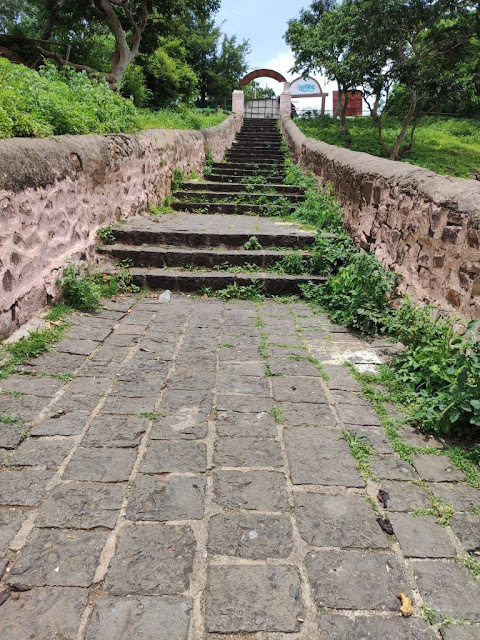








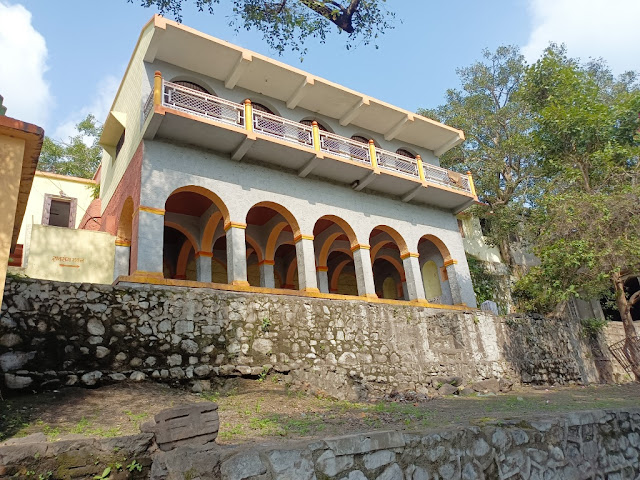




.jpg)




.jpg)

.jpg)

.jpg)


.jpg)















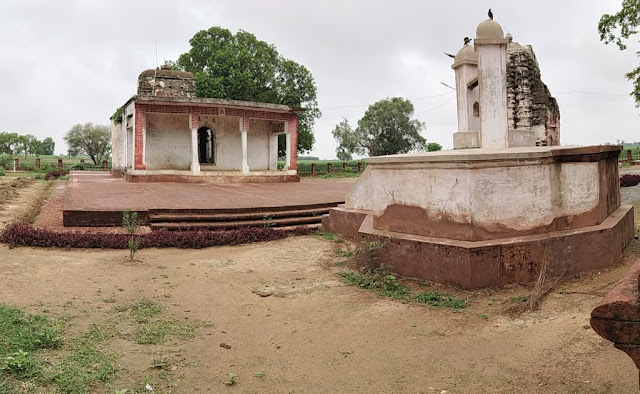

.jpg)
.jpg)






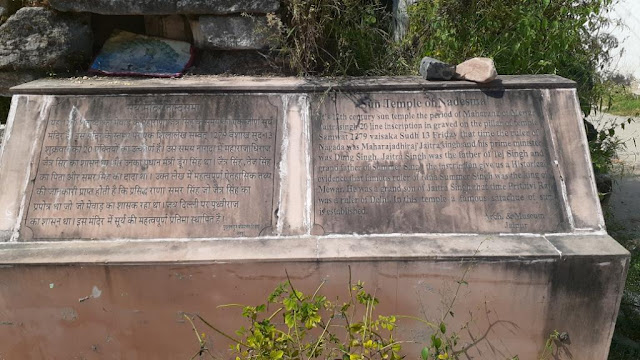
.jpg)

.jpg)




.jpg)
.jpg)


.jpg)
.jpg)
.jpg)


.jpg)
.jpg)


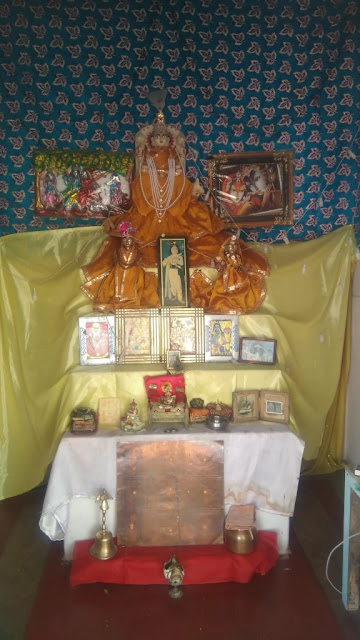



.jpg)

.jpg)



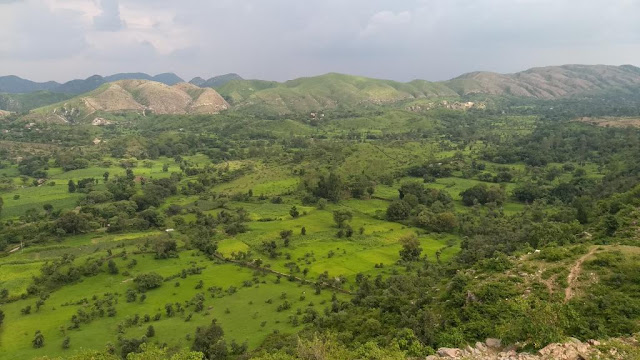
.jpg)







































































.jpg)
